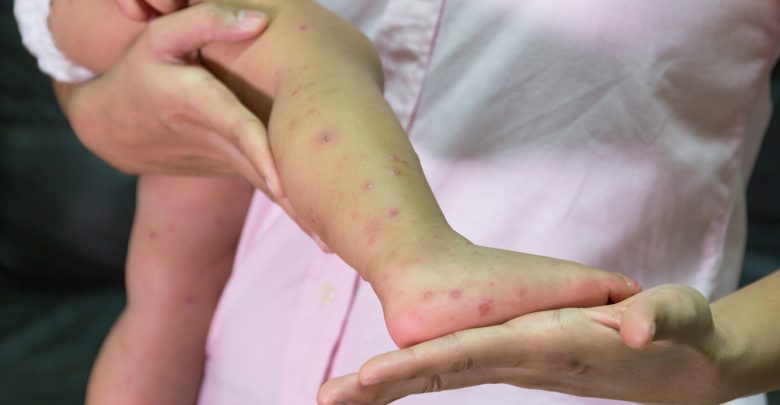Hand, foot and mouth disease: symptoms, causes and treatments

Whether a child is in daycare or at school, there is always the chance that they will be exposed to some sort of illness.
With cold weather just around the corner, parents are encouraging their children to wash their hands and to not share drink containers in hopes that they will not catch a common cold or the flu.
Thoroughly washing hands, not sharing drink containers or toys is also the best way to prevent the spread of hand, foot and mouth disease, which is caused by the Coxsackie virus.
Doctor of Osteopathic Medicine Stefanie Schroeder, who works at Carle, said the virus usually presents most often in children under the age of 10.
“We typically see in the younger kids, but that doesn’t mean older kids can’t get it. It usually just means older kids already had it when they were younger. Parents, if they’ve not had it before, can get it from their kids, too.”
The Coxsackie virus is often referred to as hand, foot and mouth disease because the most noticeable symptom is often flat red spots on the palms of the hand or bottom of the feet.
“But you can have it too in a lot of other places,” Schroeder said. “We tend to see it on little babies in their diaper area.”
Schroeder said the spots on the hands and feet usually do not cause discomfort, although sometimes they can be itchy.
The spots that usually cause pain are those found in the mouth which are blistery lesions.
Schroeder said parents might notice the sores on the inside of the cheeks or on the tongue, but doctors typically also see them on the hard palate.
“Parents might notice (their child) is eating and drinking less,” she said.
But because hand, foot and mouth disease is caused by a virus, doctors usually just support the patient through its course.
“If parents are 100-percent sure it is hand foot and mouth, they typically don’t need to bring them in to see us unless there’s something else going on,” Schroeder said. “If they are having a prolonged fever with the rash, if parents think they are not drinking well enough, if they are dehydrated, those are good reasons to come in.
“If parents are unsure; all of a sudden their kid has a fever and are breaking out in a rash, they don’t know what it is, then, of course, they can bring them in and we will take a look.”
Schroeder said doctors usually prescribe to take the recommended doses of Tylenol or Ibuprofen to help relieve pain and to drink plenty of water. While topical creams will not work on the rash, doctors might recommend giving a child Benadryl to relieve any itching symptoms, if he or she is old enough to take it.
Because the Coxsackie virus is highly contagious, Schroeder said children with hand, foot and mouth disease should stay home from daycare and/or school until the rash, not the fever, completely disappears. This can take up to seven to 10 days.
Known as a summer virus, Schroeder said cases of hand, foot and mouth generally slow down as the colder months arrive.
“But we do tend to see if somebody is sick at preschool, we see it pop up in groups where those children are getting sick, too.”



